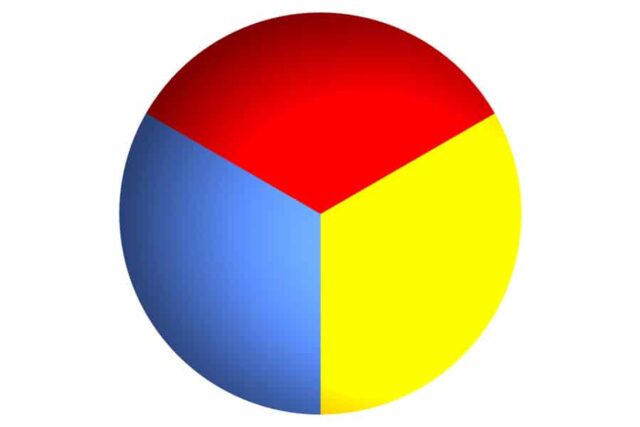The Tercera División, deeply rooted in the fabric of Spanish football, stands as a vital league that bridges grassroots talent with professional aspirations. This tier, which is organized into regional groups, serves as a proving ground for ambitious players and teams striving to ascend the ranks of Spanish football. Despite its significance, the Tercera División often remains overshadowed by higher-profile leagues like La Liga or Segunda División. However, beneath its modest exterior lies a treasure trove of statistics that can illuminate the league’s vibrant competitiveness and its importance to the sport.
Analyzing Tercera División statistics provides a window into the intricate dynamics of the league. The numbers paint a detailed picture of the league’s operations, from team performance metrics such as points earned, goals scored, and defensive records to individual player data like goal tallies, assists, and discipline records. For coaches, these insights drive tactical decisions; for scouts, they uncover hidden gems ready to make their mark on higher stages; and for fans, they add a layer of depth to their engagement with the game.
Beyond the raw numbers, the statistics of the Tercera División also reveal trends and patterns that reflect the evolving nature of football at this level. Whether it’s identifying rising stars, evaluating the impact of regional rivalries, or studying tactical shifts, these figures are an indispensable resource. Exploring these statistics not only enhances our appreciation of the Tercera División but also highlights its pivotal role in fostering the next generation of Spanish football talent.
Understanding The Tercera División
The Tercera División is a key component of Spanish football’s league system, acting as a crucial bridge between grassroots football and professional leagues. Established as part of the broader structure of the Royal Spanish Football Federation (RFEF), the Tercera División operates as the fourth tier in the hierarchy, sitting below La Liga, Segunda División, and Segunda Federación. Its unique structure divides teams into regional groups, reflecting Spain’s diverse footballing culture and fostering local rivalries that add to the league’s charm.
The league’s format is both competitive and challenging, featuring numerous teams competing within their respective regional groups. The end-of-season promotion and relegation system ensures a dynamic landscape where high-performing teams can ascend to the Segunda Federación while lower-ranked teams may drop into regional leagues. This system creates intense competition and an opportunity for clubs to prove themselves on a larger stage.
Beyond its organizational structure, the Tercera División plays a pivotal role in player development. Many professional footballers have started their careers in this league, honing their skills and gaining valuable match experience. For clubs, the league is an opportunity to showcase emerging talent, build their identity, and foster community support.
What sets the Tercera División apart is its blend of grassroots enthusiasm and professional ambition. It offers fans a chance to witness the raw, unfiltered passion of football while also serving as a critical platform for player scouting and team development. Understanding the Tercera División is essential for appreciating its contribution to Spanish football’s rich and storied history.
Types Of Statistics In The Tercera División
The Tercera División, as a competitive and diverse league, generates a wide range of statistics that provide valuable insights into team performances, player contributions, and overall match dynamics. These statistics are typically categorized into three main areas: team, player, and match statistics.
1. Team Statistics:
Team-level statistics are vital for evaluating overall performance throughout the season. These include fundamental metrics such as points earned, wins, losses, and draws, which determine a team’s position in the league table. Additional data like goals scored and conceded, goal difference, and clean sheets offer insights into a team’s offensive and defensive capabilities. Home and away performance metrics also reveal how well a team adapts to different environments, which can be crucial in regional competitions.
2. Player Statistics:
Individual player statistics are essential for identifying standout performers and analyzing their impact on the game. Key metrics include goal tallies for forwards, assist numbers for playmakers, and clean sheets or saves for goalkeepers. Disciplinary records, such as yellow and red cards, highlight players’ adherence to fair play, while minutes played and substitutions provide insights into a player’s fitness and role within the team. Emerging advanced metrics, like xG (Expected Goals), are also being applied to evaluate player efficiency.
3. Match Statistics:
Match-level statistics offer a detailed look at the dynamics of individual games. These include possession percentages, total shots, shots on target, corners won, fouls committed, and offside calls. These metrics help coaches and analysts understand the game’s flow and adjust strategies accordingly.
By examining these statistics, fans, analysts, and teams can better understand the Tercera División’s competitive and tactical nuances.
Importance Of Tercera División Statistics
Tercera División statistics are an invaluable resource for understanding the dynamics and competitiveness of this vital league within Spanish football. These numbers go beyond just the game, offering insights that benefit teams, players, analysts, and fans alike. By analyzing key metrics, stakeholders can uncover trends, make informed decisions, and enhance their engagement with the league.
- Provides insights into strengths and weaknesses through metrics like goals scored, defensive records, and possession rates.
- Helps adapt tactics and improve training regimens based on statistical analysis.
- Assists in setting realistic goals and evaluating team performance against league benchmarks.
- Identifies emerging talent using player statistics such as goal tallies, assists, and defensive actions.
- Advanced metrics like Expected Goals (xG) and pass completion rates highlight exceptional players.
- Supports a data-driven approach to discovering players ready for higher leagues.
- Enhances the viewing experience by providing context through match statistics like shots, fouls, and possession.
- Allows fans to track their favorite teams and players, fostering deeper engagement and loyalty.
- Offers a richer understanding of game dynamics and league competitiveness.
- Comprehensive data collection and analysis increase the league’s visibility and professionalism.
- Attracts sponsors, media coverage, and investments by showcasing the league’s potential.
- Elevates the profile of the Tercera División, reinforcing its importance in Spanish football’s ecosystem.
Tercera División statistics are essential tools that drive strategy, uncover talent, deepen fan engagement, and contribute to the league’s growth and recognition.
Challenges In Gathering And Analyzing Tercera División Statistics
Inconsistent Availability of Data Across Regions
The Tercera División’s structure, divided into regional groups, creates disparities in data collection. Smaller clubs, often operating with limited resources, struggle to maintain consistent records of basic and advanced statistics. This inconsistency makes it difficult to obtain a comprehensive league-wide view.
Limited Access to Advanced Technology
Unlike higher-tier leagues, many Tercera División teams lack access to advanced tools like GPS trackers, performance monitoring systems, and AI-powered analytics. As a result, data is often collected manually, increasing the risk of errors and incomplete datasets, which compromises the accuracy of statistical analysis.
Lack of Media Coverage and Reporting
The Tercera División does not receive significant media attention, leading to fewer detailed match reports, player profiles, and statistical summaries. This limited coverage reduces the availability of data for analysts, scouts, and fans, making it harder to follow the league in-depth.
Absence of Standardization
A lack of uniform practices in data collection and presentation across regional groups creates further complications. Different formats and methods used by clubs and organizations result in data that is often incompatible or difficult to compare at a league-wide level.
Resource Constraints
Many clubs operate on tight budgets, which limits their ability to hire specialized staff or invest in statistical tracking tools. This lack of resources further hampers the ability to gather and analyze comprehensive data.
By addressing these challenges through technological investments, standardization initiatives, and increased visibility, the Tercera División can improve its statistical landscape, benefiting teams, players, and fans alike.
Tools And Techniques For Analyzing Tercera División Statistics
Step 1: Use Statistical Databases and Platforms
Start by accessing online platforms like SofaScore, Transfermarkt, and Flashscore for basic statistics such as match scores, player performance, and standings. For advanced analysis, platforms like InStat and WyScout can offer deeper insights into player data, team tactics, and game trends, though availability for lower leagues may vary.
Step 2: Perform Manual Data Collection and Analysis
In cases where advanced technology is unavailable, rely on manual data recording during matches. Collect key metrics such as possession, passes, shots, and fouls. Post-match analysis using tools like Excel or Google Sheets can reveal performance trends and areas for improvement.
Step 3: Leverage Advanced Metrics and Models
Calculate advanced metrics like Expected Goals (xG), Pass Completion Rates, and Pressing Intensity (PPDA) to better understand team and player performance. While not always readily available, these metrics can be manually computed using match data and basic analytical tools.
Step 4: Use Visualization Tools
Use tools like Tableau, Microsoft Power BI, or Google Data Studio to turn raw data into meaningful visuals. Create charts, graphs, and dashboards to simplify data interpretation and highlight performance trends for coaches and players.
Step 5: Incorporate Video Analysis Tools
Use software like Hudl or Nacsport to combine match footage with statistical analysis. Tag specific game events like goals, tackles, or errors to identify patterns and areas for tactical adjustments.
Step 6: Explore Emerging Technologies
When possible, introduce GPS trackers and performance monitoring wearables to gather precise data on player movements, fitness levels, and workload. These tools provide deeper insights into physical and tactical performance.
Step 7: Collaborate with Analytics Experts
Partner with third-party analytics providers or academic institutions specializing in sports research. These collaborations can bring advanced techniques like machine learning and predictive analytics to enhance performance analysis.
By following these steps, teams, analysts, and fans can effectively analyze Tercera División statistics, making informed decisions and uncovering valuable insights to succeed in this competitive league.
Conclusion
The Tercera División is a crucial part of Spanish football, fostering talent and fueling local rivalries. Analyzing its statistics reveals valuable insights into team performances, player development, and tactical trends, helping coaches, scouts, and fans engage with the league on a deeper level. While challenges like inconsistent data collection and limited resources exist, adopting advanced tools and improving standardization can unlock the league’s full potential. By embracing data-driven strategies, the Tercera División can continue to grow, strengthening its role in shaping the future of Spanish football.
FAQ’s
Q. What division is tercera?
A. Tercera División is the fourth tier of the Spanish football league system, sitting below La Liga, Segunda División, and Segunda Federación. It is a regionalized league that serves as a pathway for teams aspiring to reach higher divisions.
Q. How many professional leagues are there in Spain?
A. Spain has three main professional football leagues: La Liga (Primera División), Segunda División, and Primera Federación. Below these, the Segunda Federación and Tercera Federación are semi-professional and amateur levels.
Q. What is class division?
A. Class division is the separation of people into groups based on factors like income, wealth, and social status, affecting their opportunities and lifestyle.














